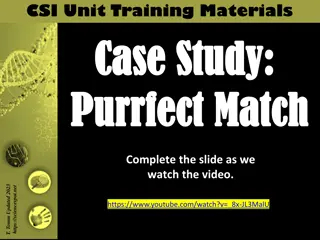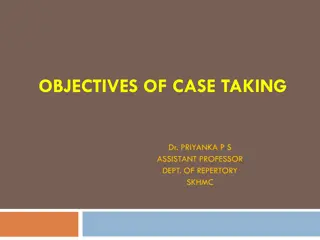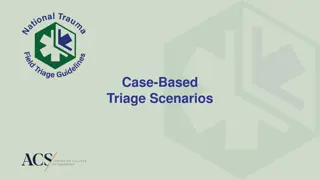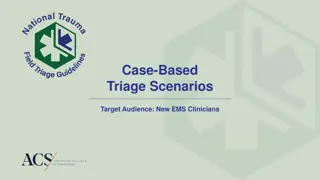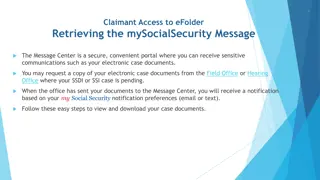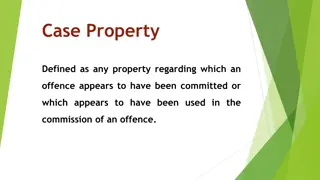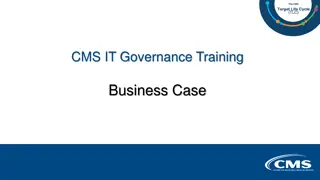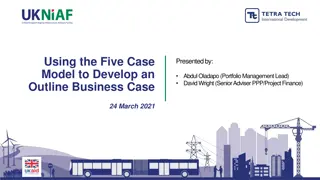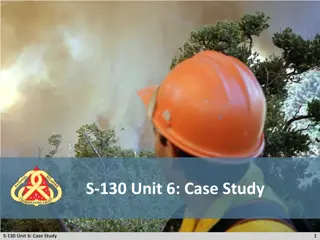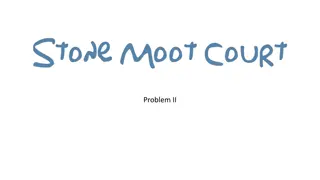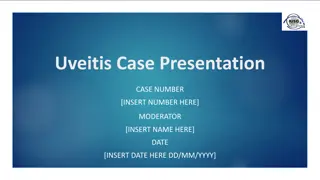
Case IH JX60 JX70 JX80 JX90 JX95 Straddle Mount Tractors Operator’s Manual Instant Download (Publication No.6-63640)
Please open the website below to get the complete manualnn//
Download Presentation

Please find below an Image/Link to download the presentation.
The content on the website is provided AS IS for your information and personal use only. It may not be sold, licensed, or shared on other websites without obtaining consent from the author. Download presentation by click this link. If you encounter any issues during the download, it is possible that the publisher has removed the file from their server.
E N D
Presentation Transcript
???????????????????????????????????????????????????????? ?????????????????? ??????????? ??????????????????????? ????????????????? ???????
ORIGINALINSTRUCTIONS - according to Directives 2006/42/EC, Annex I 1.7.4.1 JX60 / JX70 / JX80 JX90 / JX95 Straddle Mount Tractors Operator s Manual CASE 6-63640
https://www.ebooklibonline.com Hello dear friend! Thank you very much for reading. Enter the link into your browser. The full manual is available for immediate download. https://www.ebooklibonline.com
CAUTION THIS WARNING SYMBOL POINTS OUT IMPORTANT MESSAGES CONCERNING YOUR SAFETY. READ THE FOLLOWING SAFETY REGULATIONS CAREFULLY AND FOLLOW THE RECOMMENDATIONS IN ORDER TO AVOID POTENTIAL HAZARDS AND SERIOUS OR FATAL ACCIDENTS. SAFEGUARD YOUR HEALTH AND SAFETY AND THAT OF OTHERS BY ALWAYS TAKING THE UTMOST CARE. In this Manual and on the decals attached to the trac- tor, the symbol is accompanied by the following key words: IMPORTANT WARNINGS The machine is designed and produced exclusively for agricultural and forestry use. Any other use may lead to serious accidents. ? CAUTION When the warning is to prevent po- tential damage to the machine, which could also put the operator s safety at risk. All other use will be considered to be contrary to the use specified by CASE IH, who cannot be held liable for damage to property or the machine, or for per- sonal injuries which may result. ? DANGER This warning specifically indicates a potential danger to the user or to any other person di- rectly involved. Persons who risk improper use will therefore assume the responsibility for any consequences arising from such use. Compliance with the instructions for use, mainten- ance and repairs described in this Manual, are the essential preconditions for the use specified by CASE IH. Failure to observe the instructions preceded by the aforementioned key words DANGER) may result in severe or fatal injury to the persons involved. (CAUTION and The machine must only be used, serviced or repaired by personnel trained in the relevant working methods and safety regulations and who have been autho- rised to work on the machine. The driver must also observe the rules concerning general safety and accident prevention, including the Highway Code when driving on public highways. Furthermore, this Manual also contains instructions in italics preceded by the terms NOTE and WARN- ING, with the following relevance in relation to ma- chine protection: Any arbitrary modifications made to this machine will release CASE IH from any liability resulting from damage or injury. CASE IH and all distribution organisations, inclusive of, but not restricted to, national, regional or local dis- tributors, cannot be held liable for damage resulting from the malfunction of parts and/or components not approved by CASE IH. ? NOTE Underlines the correct procedure or tech- nique to be followed by the operator. Under no circumstances will a guarantee be issued for products made or sold by CASE IH that are dam- aged as a result of the malfunction of parts and/or components not approved by CASE IH. ? WARNING Informs the operator of the danger of damaging the machine if the specified procedure is not followed.
TRACTOR NOISE LEVEL INFORMATION SHEET TRACTORS WITH ROLL BARS 2/4WD Noise ROPS dB(A) JX 60 JX 70 JX80 JX 90 JX95 Operator s ear At gear corresponding to 7.25 km/h 85 85 86 85 84 81 81 81 80 82 In Motion Drive by noise Stationary 82 79 79 79 81 Test results are in accordance with directive 77/311/EEC Annex II (Operator s ear noise with no load) and 74/151/EEC (drive by noise). WARNING If the noise level during continuous use reaches or exceeds 85 dB (A), the user must take precautions.
CONTENTS Page . . . . . . . . . . . . . . . . . . . . . . . . . . . . . . . . . . . . . . . . . . . . . . . . . . . . . . . . . . . . . . . . . . . . . . . . . . . . . . . . . . . . . . . . . . . . . . . . . . . . . . . . . . . . . . . . . . . . . . . . . . . . . . . . . . . . . . . . . . . . . . . . . . . . . . . . . . . . . . . . . . . . . . . . . . . . . . . . . . . . . . . . . . . . . . . . . . . . . . . . . . . . . . . . . . . . . . . . . . . . . . . . . . . . . . . . . . . . . . . . . . . . . . . . . . . . . . . . . . . . . . . . . . . . . . . . . . . . . . . . . . . . . . . . . . . . . . . . . . . . . . . . . . . . . . . . . . . . . . . . . . . . . . . . . . . . . . . . . . . . . . . . . . . . . . . . . . . . . . . . . . . . . . . . . . . . . 1 2 3 4 5 To the user Introduction Using this Manual Communication for the user Important ecological considerations . . . . . . . . . . . . . . . . . . . . . . . . . . . . . . . . . . . . . . . . . . . . . . . . . . . . . . . . . . . . . . . . . . . . 7 Tractor identification data . . . . . . . . . . . . . . . . . . . . . . . . . . . . . . . . . . . . . . . . . . . . . . . . . . . . . . . . . . . . . . . . . . . . . . . . . . . . . . . . . . . . . . . . . . . . . . . . . . . . . . . . . . . . . . . . . . . . . . . . . . . . . . . . . . . . . . . . . . . . . . . . . . . . . . . . . . . . . . . . . . . . . . . . . . . . . . . . . . . . . . . . . . . . . . . . . . . . . . . . . . . . . . . . . . . . . . . . . . . . . . . . . 9 Safety regulations Guards and safety covers Safety decals Symbols . . . . . . . . . . . . . . . . . . . . . . . . . . . . . . . . . . . . . . . . . . . . . . . . . . . . . . . . . . . . . . . . . . . . . . . . . . . . . . . . . . . . 15 17 21 . . . . . . . . . . . . . . . . . . . . . . . . . . . . . . . . . . . . . . . . . . . . . . . . . . . . . . . . . . . . . . . . . . . . . . . . . . . . . . . . . . . . . . . . . . . . . . . . . . . . . . . . . . . . . . . . . . . . . . . . . . . . . . . . . . . . . . . . . . . . . . . . . . . . . . . . . . . . . . . . . . . . . . . . . . . . . . . . . . . . . . . . . . . . . . . . . . . . . . . . . . . . . . . . . . . . . . . . . . . . . . . . . . . . . . . . . . . . . . . . . . . . . . . . . . . . . . . . . . . . . . . . . . . . . . . . . . . . . . . . . . . . . . . . . . . . . . . . . . . . . . . . . . . . . . . . . . . . . . . . . . . . . . . . . . . . . . . . . . . . . . . . . . . . . . . . . . . . . . . . . . . . . . . . . . . . . . . . . . . . . . . . . . . . . . . . . . . . . . . . . . . . . . . . . . . . . . . . . . . . . . . . . . . . . . . . . . . . . . . . . . . . . . . . . . . . . . . . . . . . . . . . . . . . . . . . . . . . . . . . . . . . . . . . . . . . . . . . . . . . . . . . . . . . . . . . . . . . . . . . . . . . . . . . . . . . . . . . . . . . . . . . . . . . . . . . . . . . . . . . . . . . . . . . . . . . . . . . . . . . . . . . . . . . . . . . . . . . . . . . . . . . . . . . . . . . . . . . . . . . . . . . . . . . . . 23 24 27 32 34 36 41 41 42 45 47 50 53 54 Controls and instruments Seat adjustment Instrument panel Instrument console controls Operating controls, right hand side Operating controls, left hand side Operating instructions Before using the tractor Starting the engine Transmission with range gear 30 km/h (19 mph) (12F+4R Synchromesh) Transmission with range gear and shuttle 30 km/h (19 mph) (12F+12R Synchro Shuttle) Transmission with creeper and shuttle 30 km/h (19 mph) (20F+12R Synchro Shuttle) Four wheel drive . . . . . . . . . . . . . . . . . . . . . . . . . . . . . . . . . . . . . . . . . . . . . . . . . . . . . . . . . . . . . . . . . . . . . . . . . . . . . Mechanical differential lock . . . . . . . . . . . . . . . . . . . . . . . . . . . . . . . . . . . . . . . . . . . . . . . . . . . . . . . . . . . . . . . . . . . . . . . . . . . . . . . . . . . . . . . . . . . . . . . . . . . . . . . . . . . . . . . . . . . . . . . . . . . . . . . . . . . . . . . . . . . . . . . . . . . . . . . . . . . . . . . . . . . . . . . . . . . . . . . . . . . . . . . . . . . . . . . . . . . . . . . . . . . . . . . . . . . . . . . . . . . . . . . . . . . . . . . . . . . . . . . . . . . . . . . . . . . . . . . . . . . . . . . . . . . . . . . . . . . . . . . . . . . . . . . . . . . . . . . . . . . . . . . . . . . . . . . . . . . . . . . . . . . . . . . . . . . . . . . . . . . . . . . . . . . . . . . . . . . . . . . . . . . . . . . . . . . . . . . . . . . . . . . . . . . . . . . . . . . . . . . . . . . . . . . . . . . . . . . . . . . . . . . . . . . . . . . . . . . . . . . . . . . . . . . . . . . . . . . . . . . . . . . . . . . . . . . . . . . . . . . . . . . . . . . . . . . . . . . . . . . . . . . . . . . . . . . . . . . . . . . . . . . . . . . . . . . . . . . . . . . . . . . . . . . . . . . . . . . . . . . . . . . . . . . . . . . . . . . . . . . . . . . . . . . . . . . . . . . . . . . . . . . . . . . . . . . . . . . . . . . . . . . . . . . . . . . . . . . . . . . . . . . . . . . . . . . . . . . . . . . . . . . . . . . . . . . . . . . . . . . . . . . . . . . . . . . . . . . . . . . . . . . . . . . . 57 57 70 76 84 88 89 91 Field use Power take off Hydraulic lift Three point linkage Towing equipment Folding roll bar Remote control valves Hydraulic trailer brakes (not available in all markets) i
Page . . . . . . . . . . . . . . . . . . . . . . . . . . . . . . . . . . . . . . . . . . . . . . . . . . . . . . . . . . . . . . . . . . . . . . . . . . . . . . . . . . . . . . . . . . . . . . . . . . . . . . . . . . . . . . . . . . . . . . . . . . . . . . . . . . . . . . . . . . . . . . . . . . . . . . . . . . . . . . . . . . . . . . . . . . . . . . . . . . . . . . . . . . . . . . . . . . . . . . . . . . . . . . . . . . . . . . . . . . . . . . . . . . . . . . . . . . . . . . . . . . . . . . . . . . . . . . . . . . . . . . . . . . . . . . . . . . . . . . . . . . . . . . . . . . . . . . . . . . . . . . . . . . . . . . . . . . . . . . . . . . . . . . . . . . . . . . . . . . . . . . . . . . . . . . . . . . . . . . . . . . . . . . . . . . . . . . . . . . . . . . . . . . . . . . . . . . . . . . . . . . . . . . . . . . . . . . . . . . . . . . . . . . . . . . . . . . . . . . . . . . . . . . . . . . . . . . . . . . . . . . . . . . . . . . . . . . . . . . . . . . . . . . . . . . . . . . . . . . . . 93 93 98 100 101 102 104 109 114 Tyres, wheels, tracks, ballast Wheel track adjustment Steering angle adjustment Tyre maintenance Tyre loading information Inflation pressures Tyre combinations Ballasting . . . . . . . . . . . . . . . . . . . . . . . . . . . . . . . . . . . . . . . . . . . . . . . . . . . . . . . . . . . . . . . . . . . . . . . . . . . . . . . . . . Maximum permitted weight . . . . . . . . . . . . . . . . . . . . . . . . . . . . . . . . . . . . . . . . . . . . . . . . . . . . . . . . . . . . . . . . . . . . . . . . . . . . . . . . . . . . . . . . . . . . . . . . . . . . . . . . . . . . . . . . . . . . . . . . . . . . . . . . . . . . . . 117 117 120 121 123 125 127 129 132 135 141 141 142 144 149 150 151 157 Lubrication, maintenance Introduction . . . . . . . . . . . . . . . . . . . . . . . . . . . . . . . . . . . . . . . . . . . . . . . . . . . . . . . . . . . . . . . . . . . . . . . . . . . . . . . . . Access for inspection and maintenance . . . . . . . . . . . . . . . . . . . . . . . . . . . . . . . . . . . . . . . . . . . . . . . . . . . . . . . . Products and quantities for refilling . . . . . . . . . . . . . . . . . . . . . . . . . . . . . . . . . . . . . . . . . . . . . . . . . . . . . . . . . . . . . Lubrication and maintenance table . . . . . . . . . . . . . . . . . . . . . . . . . . . . . . . . . . . . . . . . . . . . . . . . . . . . . . . . . . . . . Flexible maintenance . . . . . . . . . . . . . . . . . . . . . . . . . . . . . . . . . . . . . . . . . . . . . . . . . . . . . . . . . . . . . . . . . . . . . . . . When an indicator light illuminates on the dashboard Every 10 hours of work . . . . . . . . . . . . . . . . . . . . . . . . . . . . . . . . . . . . . . . . . . . . . . . . . . . . . . . . . . . . . . . . . . . . . . . Every 50 hours of work . . . . . . . . . . . . . . . . . . . . . . . . . . . . . . . . . . . . . . . . . . . . . . . . . . . . . . . . . . . . . . . . . . . . . . . Every 300 hours of work . . . . . . . . . . . . . . . . . . . . . . . . . . . . . . . . . . . . . . . . . . . . . . . . . . . . . . . . . . . . . . . . . . . . . . Every 600 hours of work . . . . . . . . . . . . . . . . . . . . . . . . . . . . . . . . . . . . . . . . . . . . . . . . . . . . . . . . . . . . . . . . . . . . . . Every 900 hours of work . . . . . . . . . . . . . . . . . . . . . . . . . . . . . . . . . . . . . . . . . . . . . . . . . . . . . . . . . . . . . . . . . . . . . . Every 1200 hours or every year . . . . . . . . . . . . . . . . . . . . . . . . . . . . . . . . . . . . . . . . . . . . . . . . . . . . . . . . . . . . . . . Every 1200 hours of work or every 2 years . . . . . . . . . . . . . . . . . . . . . . . . . . . . . . . . . . . . . . . . . . . . . . . . . . . . . . General maintenance . . . . . . . . . . . . . . . . . . . . . . . . . . . . . . . . . . . . . . . . . . . . . . . . . . . . . . . . . . . . . . . . . . . . . . . . Tractor storage . . . . . . . . . . . . . . . . . . . . . . . . . . . . . . . . . . . . . . . . . . . . . . . . . . . . . . . . . . . . . . . . . . . . . . . . . . . . . . Electrical sysyem . . . . . . . . . . . . . . . . . . . . . . . . . . . . . . . . . . . . . . . . . . . . . . . . . . . . . . . . . . . . . . . . . . . . . . . . . . . . Recommendations for bodywork maintenance . . . . . . . . . . . . . . . . . . . . . . . . . . . . . . . . . . . . . . . . . . . . . . . . . . . . . . . . . . . . . . . . . . . . . . . . . . . . . . . . . . . . . . . . . . . . . . . . . . . . . . . . . . . . . . . . . . . . . . . . . . . . . . . . . . . . . . . . . . . . . . . . . . . . . . . . . . . . . . . . . . . . . . . . . . . 159 Troubleshooting . . . . . . . . . . . . . . . . . . . . . . . . . . . . . . . . . . . . . . . . . . . . . . . . . . . . . . . . . . . . . . . . . . . . . 167 Specifications and data . . . . . . . . . . . . . . . . . . . . . . . . . . . . . . . . . . . . . . . . . . . . . . . . . . . . . . . . . . . . . . . . . . . . . . . . . . . . . . . . . . . . . . 179 Index ii
TO THE USER JX SERIES TRE2031A Dealer s stamp 1
TO THE USER INTRODUCTION This Manual provides information and is a practical guide for the user with regard to running in, use and maintenance of the tractor. considered approximate. Figures and the illustrations do not necessarily show tractors with standard fit- tings. Read and refer to this Manual carefully, and always keep it in a convenient place so that you can refer to it whenever necessary. For precise information on specific tractor models and versions, please contact your authorised dealer. This Manual is a part of your tractor. If the tractor is sold or hired out, this Manual must be presented to the new user. The manufacturer is engaged in a continuous pro- cess of product development and improvement and therefore reserves the right to change the specifica- tions, components and prices of the product itself at any time, without prior notice. If you have any doubts in the future about tractor use, contact your CASE IH dealer. In this Manual, the left hand and right hand parts of the tractor are as seen from the driver s seat facing forward. The dealer can provide skilled personnel, original spare parts and the necessary equipment to carry out your service requirements. All necessary precautions to guarantee the safety of the operator or bystanders are listed and described in the Working safely section, at the start of the Manual. Read and follow this information provided BEFORE using the tractor. All the data provided in this Manual is subject to prod- uct modifications. Weights and measures are to be 2
TO THE USER USING THIS MANUAL In order to find information easily, the Manual is subdivided into single chapters, according to the index. Informa- tion regarding the tractor is included in the following chapters: SAFETY NORMS Working safely. CONTROLS AND INSTRUMENTS Location and operation of all controls. OPERATING INSTRUCTIONS General information regarding daily use, e.g.: starting and stopping the tractor, using the gears etc. FIELD USE This chapter deals with specific agricultural use e.g.:three point linkage, PTO etc. TYRES/WHEELS/TRACKS/BALLAST Various adjustments for agricultural use, e.g.: track variations, ballast types and use, etc. TROUBLESHOOTING This information is used to identify and correct any eventual tractor faults or mal- functions. Maintenance operations are divided into two chapters: LUBRICATION/MAINTENANCE Maintenance periods. ELECTRICAL SYSTEM Electrical system maintenance. When looking for a specific part use the Index at the end of the Manual. Make sure that the Manual is kept in good condition. If you want to know more about your tractor ask your CASE IH dealer for other manuals and information. The Service Manual, Spare Parts Catalogue and Operator s Manual are also available. Your dealer employs skilled technicians who are specifically trained to service and maintain your tractor. 3
TO THE USER COMMUNICATION FOR THE USER GENERAL GUIDELINES CLEANING THE TRACTOR Care must be taken when cleaning the tractor, es- pecially if a pressurised water cleaner is used. The tractor is a power and drive propulsion gener- ator for normal and traditional use in agriculture and forestry work. The main tractor functions are: towing, pushing, transporting, lifting, operating machines or specific implements. Do not use the tractor for purposes other than those described in this Manual. ? Never stand too close to the tractor or direct the water jet on electrical components, seals or intake openings, etc. ? Never direct jets of cold water at the hot engine or exhaust. See also Recommendations for bodywork maintenance in the Lubrication and Maintenance section. The tractor is designed and constructed to provide the best performance economically, safely and is easy to use in a wide range of working conditions. Prior to delivery, all machines are carefully inspected by both the Manufacturer and your local authorised dealer, to make sure that they reach the user in per- fect condition. To maintain the tractor in this condition and ensure trouble free operation, the routine main- tenance operations described in the Lubrication/ Maintenance chapter of this Manual must be carried out at the specified intervals. SPARE PARTS Non original spare parts have not been tested or authorised by the Manufacturer. Instalment and/or use of such products may adversely affect the trac- tor s design specifications, thereby compromising operational safety. The manufacturer cannot be held responsible for any damage resulting from the use of non original spare parts. No modifications may be made to the tractor without written authorisation from the Manufacturer. SAFETY Safety precautions for the operator and bystanders are shown on page 9 to page 14, inclusive. Read the safety instructions and follow recommendations and hints before starting to use the tractor. WARRANTY The tractor is guaranteed in accordance with current legislation in your country and in line with contractual agreements reached with the dealer at the time of sale. However, the warranty is no longer valid if the rules and instructions for the use and maintenance of the tractor, described in this Manual, are not ob- served. The manufacturer must authorise any special fittings that may be required by the user. Non authorised fit- tings terminate the tractor warranty conditions. CAUTION: It is the tractor owner s responsi- bility to apply the laws and relevant directives and all CASE IH instructions with regard to tractor work and maintenance. 4
TO THE USER IMPORTANT ECOLOGICAL CONSIDERATIONS Soil, air and water are essential elements for agricul- ture and for life in general. If local legislation does not control the treatment of certain substances, the pro- duction of which is necessitated by advanced techno- logies, products derived from chemical and petroche- mical products must be used and disposed of according to the rules of common sense. 3. Modern lubricants contain additives. Do not burn contaminated fuel oils and/or oils used in conventio- nal heating systems. 4. Avoid spillage when transferring used engine cooling liquids, engine and transmission lubricants, hydraulic oils, brake fluids, etc. Never mix used brake oil with fuel oil, or fuel oil with lubricants. Store safely until suitable disposal can be arranged according to national legislation or local regulations. The following recommendations may be of help: ? Find out what the relevant legislation in your coun- try stipulates. ? Ask your suppliers of lubricants, oils, fuels, antifreeze, detergents, etc. for information on the ef- fects of these products on humans and the environ- ment and for instructions concerning their use, stora- ge and disposal. In many CASE IH dealerships, local agricultural consultants will be able to provide assi- stance. 5. Modern antifreeze liquids and solutions, e.g. antifreeze and other additives, must be replaced every two years. They must not be left to be absorbed into the ground, but must be collected and disposed of in a suitable manner. 6. Any leakage or defect in the engine cooling or hydraulic systems must be repaired immediately. SUGGESTIONS 1. Avoid using unsuitable, pressurised filling sy- stems or fuel cans when filling tanks, as these may cause considerable spillage and leakage of liquids. 7. Do not increase the pressure in pressurised sy- stems, as this may cause component parts to burst. 2. As a general rule, do not allow liquid fuels, lubricants, acids, solvents, etc., to come into contact with the skin. The majority of these products contain substances that are potential health hazards. 8. When welding, make sure that hoses are properly protected as sparks or molten material may puncture or weaken the tubes and sleeves, resulting in leakage of oil, cooling liquid, etc. 5
TO THE USER NOTES 6
TRACTOR IDENTIFICATION DATA TRACTOR IDENTIFICATION Serial numbers identify the tractor and its main components. The identification data must be supplied by the dealer for requests for spare parts or service operations. Identification data is of fundamental importance in the event of theft of the tractor. The location of the various identification data is shown below. Frame identification data plate. TRE0039A Frame type data plate. and identification engine Tractor frame number identification data plate (stamped on the axle support ). 7
TRACTOR IDENTIFICATION DATA TRE2039A Tractor frame number identification data plate (stamped on engine block). Engine identification data plate (stamped on engine block). TRE2030A 8
SAFETY REGULATIONS WORKING SAFELY GENERAL INFORMATION ? It is advisable to keep a first aid kit on hand. ? During the manufacturing of this tractor, every step has been taken to ensure safe operation. How- ever, the best way to avoid accidents is to exercise caution at all times. Once the accident has happened it is too late to remember what steps should have been taken. ? The tractor must only be used by responsible per- sonnel, trained in tractor use and authorised to oper- ate the machine. ? Read this Manual carefully before starting, using, carrying out maintenance, refuelling or performing any other type of operation on the tractor. ? Do not alter the injection system calibration in an attempt to increase maximum engine speed. ? The time spent reading this Manual will allow you to get to know your tractor, thereby saving time and effort. This will also help prevent accidents from tak- ing place. ? Read all the safety decals on the machine and fol- low the instructions thereon before starting, operat- ing, refuelling or carrying out maintenance on the ma- chine. Promptly replace any decals that are damaged, lost or illegible. Clean the decals if they are covered by mud or debris. 24266 ? Do not wear loose clothing that may be trapped in moving parts. Check that all rotating parts connected to the power take off are correctly protected. ? Remember that the tractor is exclusively designed for agricultural use. Any other use will require prior authorisation from CASE IH. 9
SAFETY REGULATIONS ? Do not alter the calibration of the pressure relief valves in the various hydraulic circuits (hydrostatic steering, hydraulic lift, auxiliary distributors, etc.). side panels, power take off guard, front axle trans- mission shaft cover, etc.). ? Never start or manoeuvre the tractor unless seated in the driving position. ? Avoid using the tractor in unsuitable physical conditions. Stop work instead. ? Enter and leave the tractor carefully, using the steps and handles provided. Keep these fittings free of mud and debris. ? Always operate with the roll bar correctly and se- curely fitted on the tractor: periodically check that the fittings are tight and that all parts of the structure are free from any damage and deformation. Do not mod- ify the roll bar by welding parts, drilling holes, etc., as this could adversely affect the rigidity of the structure. 24135 ? Before moving the tractor, always check that the area is free of persons or obstacles. STARTING THE TRACTOR ? Before starting the engine, check that the hand- brake is on and that the gears and power take off are disengaged, even if the tractor is fitted with a start up safety device. Never disconnect the start up safety switch. If the switch does not work correctly, contact your local dealer for eventual repair. 24134 ? Before starting the engine, make sure that all at- tached implements are lowered to the ground. ? Never run the engine in a closed space without en- suring adequate ventilation. Exhaust fumes are dam- aging to the health and can be lethal. ? Before starting the engine, check that all covers and guards are correctly in position (roll bar, bonnet 10
SAFETY REGULATIONS USING THE TRACTOR ? When the tractor is moving, the operator must re- main correctly seated in the driving position. ? Select the most suitable wheel setting for the work in hand, i.e.: the setting that provides the best stabil- ity. ? Never get on or off the tractor while in motion. ? When using the brakes, press the pedal down slowly. ? Avoid steering around curves or bends at high speeds. ? Always use the tractor at a speed that will guaran- tee safe operation on the type of land being worked. When working on uneven ground, use maximum care to ensure proper stability. 24136 ? Engage the clutch slowly: if engaged too quickly, especially when the tractor is getting out of a hole, ditch or operating on muddy ground or steep slopes, the tractor may overturn. Fully press down the clutch pedal immediately if the front wheels start to lift. ? If you have to work with the tractor on a gradient, for example on hillsides, drive at moderate speed es- pecially when taking curves. 24137 ? Proceed with maximum caution when working with the wheels near the edge of ditches or slopes. 24223 ? When travelling downhill, keep the tractor in gear. Never release the clutch and never leave the gears in neutral. ? When driving on public highways, observe the Highway Code. 19400 11
Suggest: If the above button click is invalid. Please download this document first, and then click the above link to download the complete manual. Thank you so much for reading
SAFETY REGULATIONS ? When driving, do not rest your feet on the brake or clutch pedals. lower arms or the top link of the three point linkage. This may result in tipping or overturning. 24138 24139 ? Never carry passengers, not even in the driver compartment, unless the tractor is fitted with an ap- proved extra seat. ? When towing, do not negotiate curves with the dif- ferential lock engaged as this may prevent you from steering the tractor. ? When driving on roads, connect the brake pedals using the plate provided. Braking when the pedals are not connected could cause the tractor to skid. Avoid excessive wear on the brakes by using engine brak- ing. USING IMPLEMENTS AND AGRICULTURAL MACHINERY TOWING AND TRANSPORT ? Do not connect implements or machinery that re- quire more power than can be generated by your trac- tor model. ? To guarantee tractor stability when moving, adjust the hitching device according to the trailer or imple- ment to be used. ? Never negotiate sharp curves with the power take off under a heavy load; this may damage the universal joints on the transmission shaft connected to the power take off. ? Drive slowly when towing extremely heavy loads. ? For your own safety, do not tow trailers that are not fitted with an independent braking system. ? If the tractor is used to tow heavy loads, always use the hitching device and never hitch loads onto the ? Never stand between the reversing tractor and the implement when hitching. 12
https://www.ebooklibonline.com Hello dear friend! Thank you very much for reading. Enter the link into your browser. The full manual is available for immediate download. https://www.ebooklibonline.com











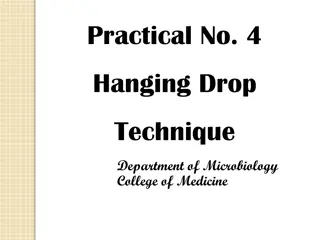

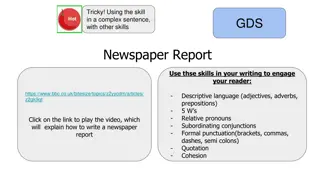
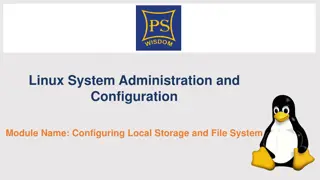



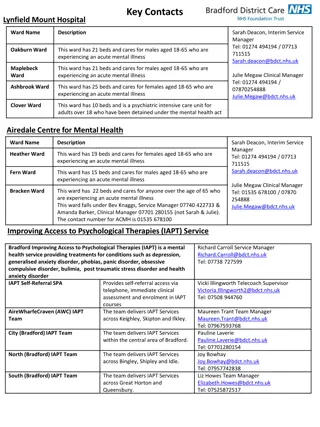

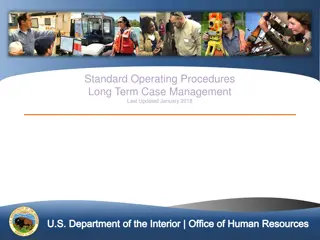
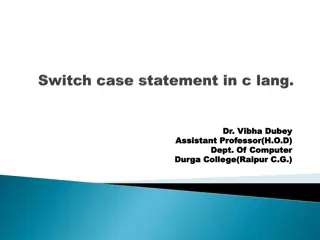

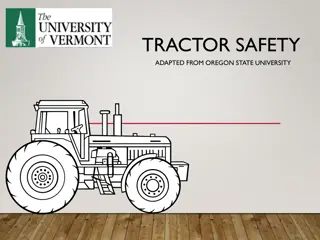


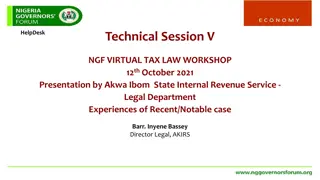
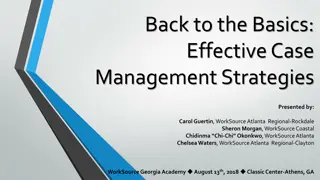

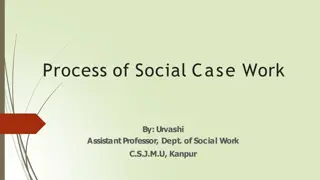

![Property Settlements in Family Law: Case Study of Stamatou & Stamatou [2022] FedCFamC1F 241](/thumb/63303/property-settlements-in-family-law-case-study-of-stamatou-stamatou-2022-fedcfamc1f-241.jpg)




